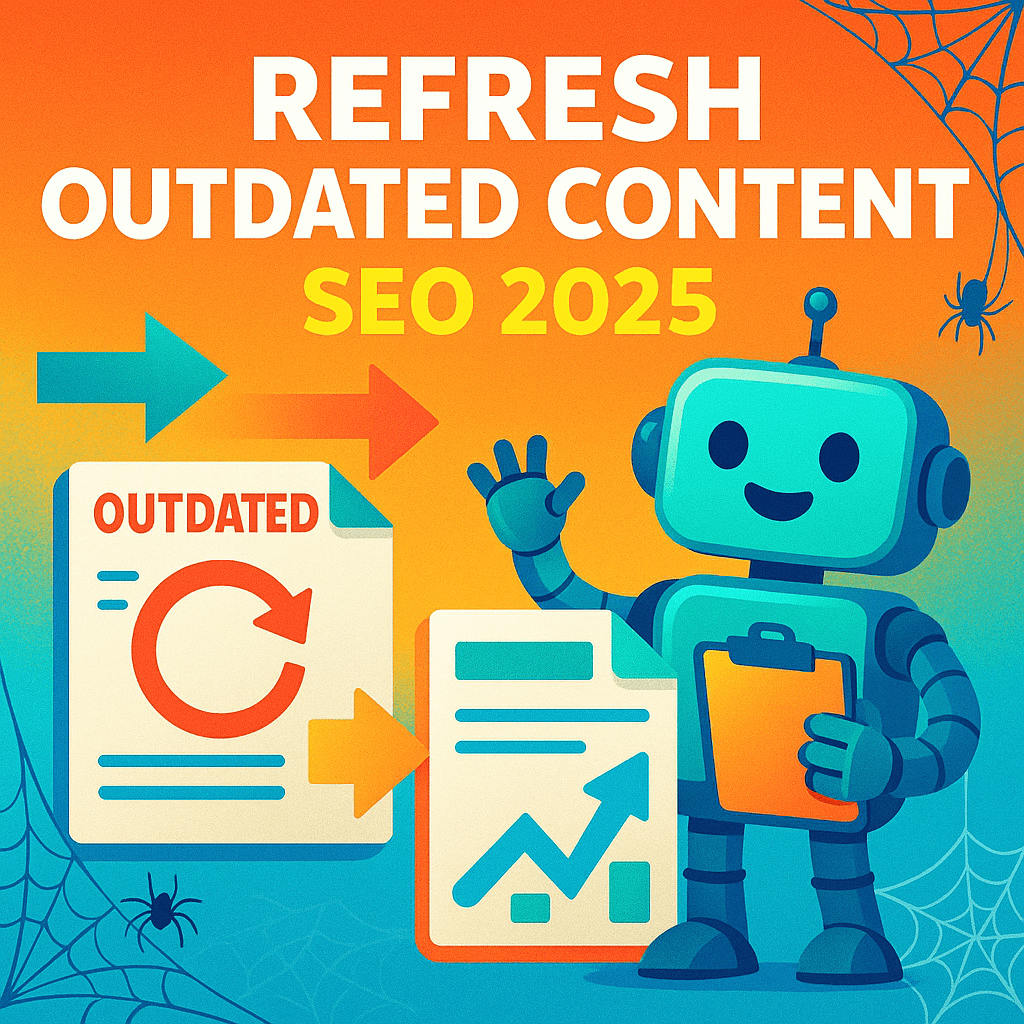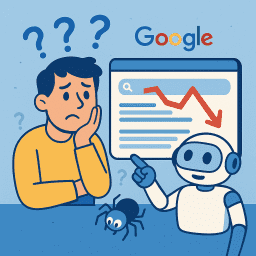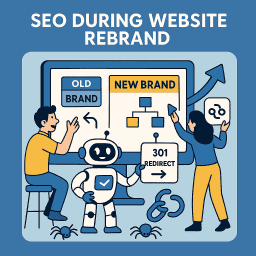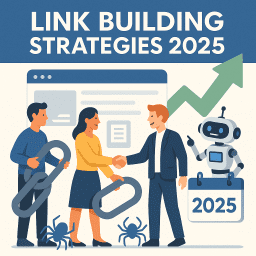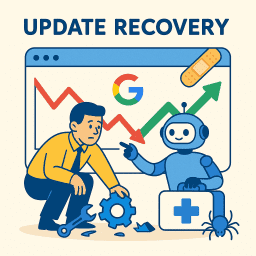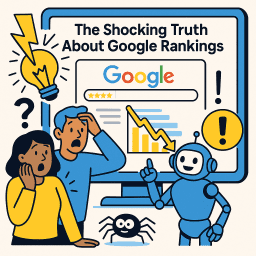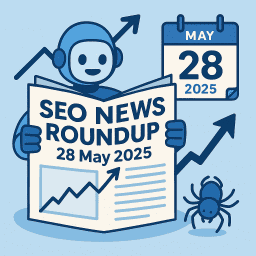Refresh Outdated Content for Better Rankings (2025)
Improve rankings by updating and reoptimising stale content
♻️ Refresh or Fade: The Truth About Content Decay
SEO isn’t just about publishing new content—it’s about keeping existing content fresh, relevant, and aligned with search intent. Over time, even your best-performing pages can suffer from what’s known as content decay: a slow and steady drop in rankings and traffic. If left unchecked, it can cost you visibility, clicks, and conversions.
📉 What Is Content Decay?
Content decay refers to the gradual decline in organic traffic to a piece of content that once ranked well. It’s often the result of:
- 📆 Outdated statistics or examples
- 🔍 Shifts in user search intent
- 📉 Declining backlinks or internal links
- 💻 Algorithm updates that change what Google values
Think of your content as a living asset—it needs regular check-ups and updates to stay competitive in the SERPs.
🔎 How to Identify Outdated Content
Before you can refresh anything, you need to spot the pages that are underperforming. Start by:
- 📊 Checking Google Search Console for pages with declining impressions or clicks
- 📈 Reviewing traffic trends in Google Analytics
- 🔗 Running a content audit to evaluate old blog posts, guides, and landing pages
- ⚠️ Prioritising pages that used to perform well but have dropped off
🛠️ Key Areas to Refresh
🧠 1. Re-Evaluate Search Intent
Search intent can shift over time. Make sure your content still answers the query in the way users expect. If your post is informational but the SERPs are now showing comparison posts or video walkthroughs, it’s time for a strategic rewrite.
📅 2. Update Stats & Examples
Swap outdated statistics for recent ones and replace old case studies or product references with newer, more relevant examples. This adds credibility and relevance.
📝 3. Revise Your Title & Meta Description
Use fresh language, power words, and include the current year where appropriate. Make sure your meta description encourages clicks by clearly stating the benefit to the reader.
🔑 4. Reoptimise Keywords
Review what keywords the page is currently ranking for and whether they still make sense. Use tools like Ahrefs, SEMrush, or Google Search Console to identify gaps and opportunities. Sprinkle in long-tail variants and questions where appropriate.
📍 5. Improve Internal Linking
Link the refreshed page from other related high-traffic pages on your site. This can help spread link equity and improve crawlability.
⚙️ 6. Add Structured Data (If Applicable)
If the content can benefit from rich results (e.g. FAQ schema, HowTo schema), add the appropriate structured data to improve click-through rates in the SERPs.
📋 When to Refresh vs. Rewrite
If a post has solid structure and relevance but is missing up-to-date information or keywords, a refresh is enough. But if the entire direction or intent is outdated, consider rewriting the content completely under the same URL to retain backlinks.
🚀 After You Hit Update
Don’t forget to:
- 🔄 Resubmit the page in Google Search Console
- 🕵️ Monitor changes in rankings and traffic
- 📣 Share the updated post on your social media or newsletter
🎯 Final Thoughts
Refreshing outdated content isn’t just a smart SEO tactic—it’s one of the most efficient ways to breathe new life into your website. Instead of constantly chasing new content ideas, revisiting and refining what you already have can yield faster wins, reclaim lost traffic, and reinforce your topical authority. Google loves content that evolves with user intent, reflects the latest information, and stays technically sound.
Make content updates part of your ongoing SEO workflow, not just an annual clean-up. Monitor performance regularly, prioritise your highest-value pages, and approach every update with a clear focus on user needs. It’s one of the most underused—and most effective—ways to keep climbing the rankings.
“Great SEO isn’t just about what you publish—it’s about what you maintain. Keep your content relevant, and Google will keep sending traffic.”
– David Roche
♻️ Refreshing Outdated Content – 2025 FAQs
What does “refreshing content” mean in SEO?
It’s the process of updating an existing page—facts, stats, screenshots, links, schema, and publish date—so it meets current search-intent and quality signals without changing its URL.
How often should I review pages for a refresh?
Audit high-traffic or business-critical posts every 6–12 months; evergreen pages can stretch to 18 months unless rankings or CTR dip.
Which metrics signal a page needs updating?
Falling impressions, declining click-through rate, or a slow slide from page-one to page-two positions in Search Console are classic warning signs.
What should I update first—content or technical elements?
Start with factual accuracy and keyword alignment, then refresh images, internal links, structured data, and finally check Core Web Vitals.
Should I change the original URL when I refresh?
No—keep the URL to preserve backlinks and authority. Update the on-page title tag and H1 instead.
Is it OK to update the publish date?
Yes—if the content has been substantially revised. Show both “original” and “updated” dates for transparency and improved news-style SERP freshness signals.
Do I need to resubmit the page to Google after editing?
Running “URL inspection → Request indexing” in Search Console helps Google recrawl faster, but it’s optional—bots usually pick up major edits within a few days.
How can I measure the impact of a refresh?
Compare 30-day pre- and post-update data: impressions, clicks, average position, and on-page conversions in GA4. Annotate the refresh date for clear attribution.
What if the content is no longer relevant at all?
Consider merging it into a newer, broader guide and 301-redirecting the old URL—this consolidates authority and avoids thin-content penalties.
Does refreshing older posts help E-E-A-T?
Yes—adding recent data, author expertise, and updated references signals ongoing accuracy and real-world experience, strengthening E-E-A-T factors Google values in 2025.


